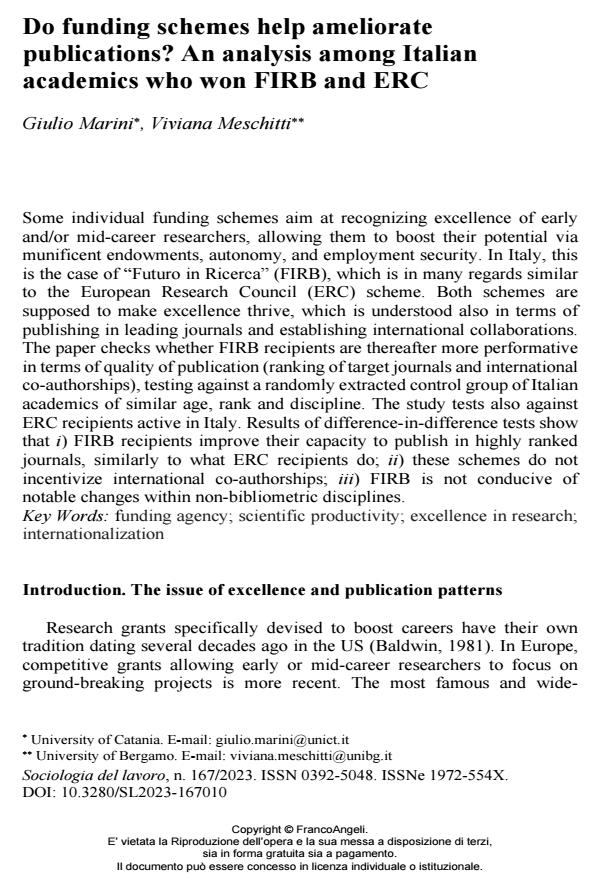Do funding schemes help ameliorate publications? An analysis among Italian academics who won FIRB and ERC
Titolo Rivista SOCIOLOGIA DEL LAVORO
Autori/Curatori Giulio Marini, Viviana Meschitti
Anno di pubblicazione 2024 Fascicolo 2023/167
Lingua Inglese Numero pagine 22 P. 221-242 Dimensione file 279 KB
DOI 10.3280/SL2023-167010
Il DOI è il codice a barre della proprietà intellettuale: per saperne di più
clicca qui
Qui sotto puoi vedere in anteprima la prima pagina di questo articolo.
Se questo articolo ti interessa, lo puoi acquistare (e scaricare in formato pdf) seguendo le facili indicazioni per acquistare il download credit. Acquista Download Credits per scaricare questo Articolo in formato PDF

FrancoAngeli è membro della Publishers International Linking Association, Inc (PILA)associazione indipendente e non profit per facilitare (attraverso i servizi tecnologici implementati da CrossRef.org) l’accesso degli studiosi ai contenuti digitali nelle pubblicazioni professionali e scientifiche
Some individual funding schemes aim at recognizing excellence of early and/or mid-career researchers, allowing them to boost their potential via munificent endowments, autonomy, and employment security. In Italy, this is the case of “Futuro in Ricerca” (FIRB), which is in many regards similar to the European Research Council (ERC) scheme. Both schemes are supposed to make excellence thrive, which is understood also in terms of publishing in leading journals and establishing international collaborations. The paper checks whether FIRB recipients are thereafter more performative in terms of quality of publication (ranking of target journals and international co-authorships), testing against a randomly extracted control group of Italian academics of similar age, rank and discipline. The study tests also against ERC recipients active in Italy. Results of difference-in-difference tests show that i) FIRB recipients improve their capacity to publish in highly ranked journals, similarly to what ERC recipients do; ii) these schemes do not incentivize international co-authorships; iii) FIRB is not conducive of notable changes within non-bibliometric disciplines.
Parole chiave:funding agency; scientific productivity; excellence in research; internationalization
- Shielding the few and perpetrating the pattern for the many: interaction of gender discrimination and status in predicting promotion Giulio Marini, Viviana Meschitti, in Humanities and Social Sciences Communications 1153/2025
DOI: 10.1057/s41599-025-05402-w
Giulio Marini, Viviana Meschitti, Do funding schemes help ameliorate publications? An analysis among Italian academics who won FIRB and ERC in "SOCIOLOGIA DEL LAVORO " 167/2023, pp 221-242, DOI: 10.3280/SL2023-167010